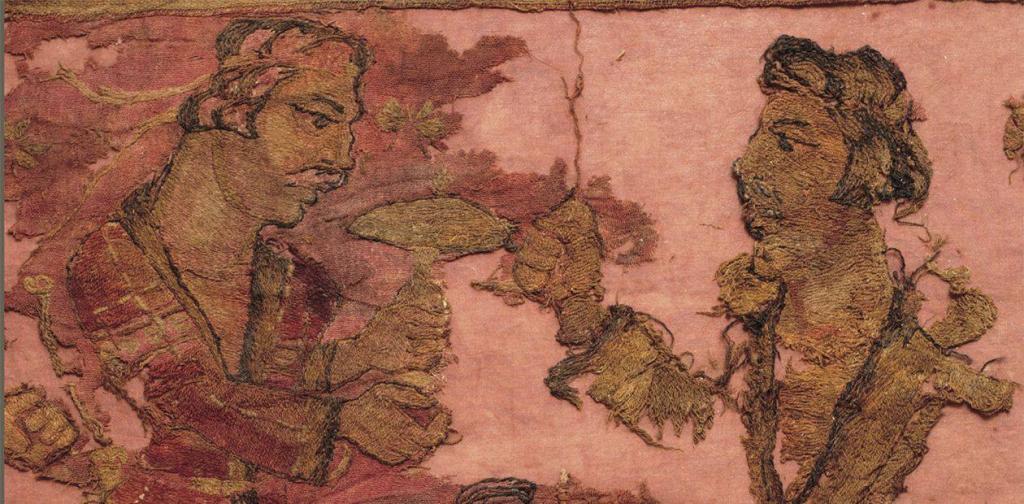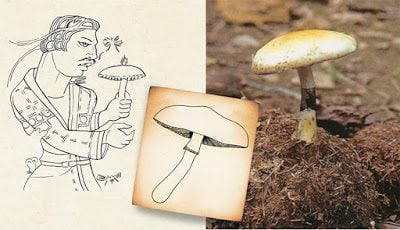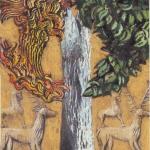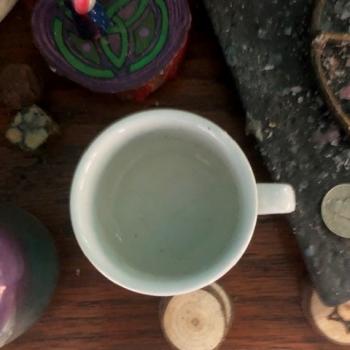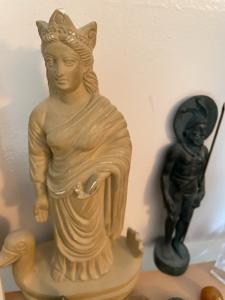This series is a series on my mystical experiences in indo-european polytheism. I cataloge the exact experiences in these articles:
- I Sacrificed Myself to Myself: An Introduction
- I Sacrificed Myself to Myself: Reaching up the Tree, Begging for its Fruits to Fall
- I Sacrificed Myself to Myself: The Fruits Fall
- I Sacrificed Myself to Myself: The Return Gifts of Sacrifice
Introduction & Preparation
The mystic experience is the quintessence of the hero’s journey that Campbell saw. It is a dismembering and death of the ego, and its consequential rebirth. You don’t see many stories of many heros who came out of their ordeals alive without that initial aid the received from a mentor. Be it Gandalf, Hagrid, or Morpheus. In this, you will need an aid and a guide. I do not offer this as a service so I am recommending this from a place of safety and not one of making a professional living, not that there’s anything wrong with someone who does it wisely and correctly. And the only way that is, is someone who is willing to sacrifice themselves to ensure your safety.
My Gurus were Ram Dass, Sadguru, Alan Watts, Terence McKenna, and Ian Corrigan. I learned from them over the internet, and they were all I could find who talked about this thing no one else talked about. I was meant to journey alone and learn to put myself back together without a teacher. But unless you want to drown in suicidal nihilism for 48 months or longer, where the thing that makes your will to live has been dissected and is laying on the garage floor all torn apart like a lawn mower that doesn’t work quite right, and unless you can put that thing back together under the loss of a will to live so that you can romanticize the world correctly, then you need someone who has been through this who can help you. Madness doesn’t describe it.
“When I use the word mysticism, I’m referring to a kind of experience. A kind of, shall we say, state of consciousness, which seems to be as prevalent among human beings as measles. It’s something that simply happens, and we don’t know why it happens. And although there are all sorts of techniques which claim to be able to promote it, and which are more or less successful in doing so and sometimes less than more. Nevertheless there is this peculiar thing that happens to people and it has been recorded as far back in time as we’ve had any recording at all. And that is, coming over people the peculiar sensation that their ordinary sense of individuality of personal identity is transcended.” – Alan Watts
Pagan Mysticism
Mysticism is a practice in nearly all religious traditions which approaches the divine in order to know the mind of the divine. Divine Mysteries were taught in ancient mystery schools, married with science and mysticism together, to those who would would understand them.
Modern Pagan mysticism is simply no other thing than knowing the mind and will of the polytheistic gods. How do we do this? What is it we’re aiming for? Is there actually a real thing we’re aiming for? The Mystic Experience precedes these questions. It happened first, then mystics told people about it and now you know these experiences exist and, as a result, people seek them out. To answer these questions, you have to know why the mystic experience happens to begin with, which we’ll talk about later with Framing. Pagan mysticism, particularly Indo-European, is founded heavily on polytheism, ascension and rebirth tenets, and the creation of all mortals through the dismemberment of a primordial mortal like Bith, Ymir, or Purusha. This kind of mysticism is heavy on gnosis and ability like fire being stolen from the gods, fire relating to Prometheus, Pramathayas, and figures like Math Mathonwy, who all have the Proto-Indo-European root for friction(*math/meth) in their names.
I believe the secret of fire among the proto-indo-europeans metallurgy, as part of the economic advancement of steppe people we refer to as the Yamnaya Package, came from the mystical experiences, and the way it has of putting together for us to see that which has always been there in potential though we couldn’t in normal states see on our own. When I use the word ‘see’ I really mean to map out dynamic systems in concept in our head, to understand them. The more you can see, the brighter your fire or lamp is, the greater your awareness, not just see what is around you but to see how the parts have truth(Rta) or how they ‘fit-together’. To glean this understanding, to be able to utilize it to generate new insight for problem solving, is the very definition of wisdom among the paganisms of northern Europe and India.
Once you glimpse the mysteries for yourself, you will know well why this gnosis is kept from us, and why the mortals and spirits of this world behave the way they do. The cosmos is a machinery which churns out a full set of wise, honorable, immortal, and divine beings on a scale ranging from tiny spirit to giant deity, and mortals being somewhere in between. It churns ot a full spectrum of indifferent to malevolent beings on part of that same scale. We are certainly different from the gods and closer to the spirits and ancestors, however, what makes them gods is simply that they are the wisest, strongest, most skilled, and first spirits. The gods are the first beings, first ancestors, and first kindred.
In the Irish lore, Finian warriors would hang themselves upside down on birch trees for 9 days(Puhvel 197). In the Germanic lore, Othinn hung himself from the world ash(194), sacrificing himself to himself(Havamal 138). And in lower Germanic regions, Tacitus writes, worshipers would be chained in a ‘fetter’ grove, in service to the ruling god of all, Othinn(Puhvel 198). To hang above the Well staring into the mists that are coming out of it, pointing your crown downwards, and letting your spirit escape into it, requires a great sacrifice to yourself. Exactly how is this done?
Oðinn sacrificed himself on the central pillar, Yggdrasil. Ygg means horse, and is a kenning for a victim riding the gallows(194).
I know that I hung on the windy tree for nine full nights,
Wounded with a spear, and given to Oðinn,
Myself to myself,
On that tree of which no one knows where the roots run.
(Poetic Edda, Havamal 138)
In this series, I will tell you what that means to me, what I saw, and how I sacrificed myself to myself.
The first part of this series will be about the psyche and shadow work topics. For more check out my other shadow work article here.
Shadow work is related to mysticism because this is the first kind of stuff you see while having the mystic experience. If you don’t want the spirits to tell you to get your shit together, then don’t go in. Everyone has shit that needs getting together, clearing out their shadow to integrate it with the ego.
And everything I saw in the Otherworld, boiled down and amounted to setting focus on this tasks for individuals, as communities, and as larger groups.
Lucidity is probably the most important concept related to pagan mysticism. Awareness is everything. You will only be reborn in full awareness.
How is it done?
Very simple, remove all obstructions from seeing, and all knowledge which is comfortable or uncomfortable that you cling to in order to validate your being. These are the parts of yourself which you get rid of. Othinn had something in his side and eye which prevented him from seeing the wisdom. That thing that makes you antsy, monkey mind, that’s it, you must destroy that. How do you do that? No hard to say. The ways I know of are extreme asceticism and acts of tapasia, holotropic breathing, and plant wisdom.
Bias against using ‘Drugs’
Bias against using ‘drugs’ is part of our culture, as a result, clinging to the idea that all “drugs are bad m’kay” will cease once you’ve actually had the mystical experience and learn to dissect whole reactions as ropes made of little threads of reasons and biases. And until you learn to visit these threads, don’t become a mystic. Here is one we will visit now.
Zoroaster(aka Zarathustra) began creating Zoroastrianism because he observed the Avestan Houma Ritual and thought the wisdom it gave their mystics was a “Lie”, which in avestan is the word Drug from (PIE *dʰrewgʰ-)(Proto-Germanic *dreuganą). We are told by academics that the world drug is associated with dry goos through the proto-germanic word *dreugaz. But this part of the tree is all reconstructed and I can’t imagine that persian Drug and English Drug are not related when the proto-germanic root of both is one or two sound extensions off. Nevertheless, the idea that drugs create delusionary state is encoded in the sounds of proto-indo-european language. While this is for the most part true, the ancient Avestan Mystics, Vedic Mystics used the spirits of plants, consumed to absorb power and ability to see the gods and have the experiences described in the Vedic texts, Dionysian rites, et all. The evidence for this can be seen in fractals in persian art, as you do with every culture that has access to this substance.
Even if the linguistic connection isn’t there, Zoroaster was responsible for the black and white thinking that christianity inherited, where this is a dividing line of morality and everything on one side is seen as good while everything on the other side was seen as bad. For the most part this was the fault of the Avestan aristocracies and intelligentsia. Probably calling their acts of drug use and haughtiness bad, while the conservative poor third function good. This is natural when there is a gap in the quality of living from the producing class and the ruling classes. The producing classes start to identify all their qualities as good and other the aristocracy. This reinforces poverty because people will martr themselves with hard labor for little while thinking it is virtuous to reap little after putting in all. But this was the situation and Zoroaster came along at the right moment, projecting the producer class’s disgust into a movement, even though he wasn’t from the producer class himself. Because so many people had bad experiences with the aristocracies, they caved.
What is Soma or Hoama?
The mystic experience is one of full awareness. I drank soma several times in the fall of 2015 and the year after. Soma is a lost Vedic immortality drink, and its ingredients are highly theoretical. But as a religious and anthropological experiment, I found myself trying to recreate it, which I did to my satisfaction. The measuring stick I used was that my experience would match key scriptures in the vedas describing what happens when you drink soma. I will not divulge exactly how I made it, and though there are many psychoactive ingredients, only one is for the mystic experience. The others are management tools such as inhibitors anti-nausea agents and things designed simply to pull out constituents.
We have drunk soma and become immortal;
We have found light, we have found the Gods.
Now what may foeman’s malice do to harm us?
What, O Immortal, mortal man’s deception? – Rg Veda Mandala 8 48.3
